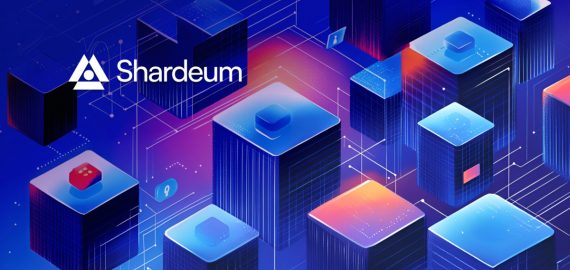Tokenization, Wallets, and Gaming: Key Drivers for Ethereum’s Next Chapter
In Brief
As Ethereum approaches its 10th birthday in 2025, developments such as tokenized real-world assets (RWAs), innovations in wallet technology, and advancements in Web3 gaming—catalyzed by speedy Layer 2 solutions and artificial intelligence—are paving the way for a new era of adoption. Block explorers will play a critical role in ensuring that data remains accessible and transparent for all users.

In 2025, we will mark a decade since the launch of the Ethereum blockchain and the Ethereum Virtual Machine (EVM). Within this relatively short span, we have witnessed a whirlwind of experimentation, evolving use cases, and fluctuations in adoption, all part of a tumultuous evolution that is swiftly driving towards widespread acceptance. As the EVM wraps up its initial ten years, previously emerging trends are resurfacing, garnering renewed interest and momentum.
Three significant trends that are fueling the next adoption wave include advancements in tokenized RWAs, innovative wallet solutions, and developments in Web3 gaming. These trends are supported by new, faster, and cost-effective Layer 2 chains that facilitate scaling for both tokens and gaming applications. Additionally, AI is significantly enhancing processes and delivering content at an unprecedented rate. Innovations in block explorers play a vital role in adoption, as they ensure that data related to RWAs and gaming platforms is readily available and encompasses all essential data points associated with these advanced applications.
The scaling factors are influencing the future trajectory of the EVM, as recently articulated by Vitalik Buterin in his discussions surrounding possible futures for the Ethereum protocol. The transition to a single slot finality in 'The Merge,' the move towards a rollup-centric approach aimed at achieving over 100,000 transactions per second in 'The Surge,' and 'The Splurge,' focused on optimizing transaction fees managed by paymasters, all point to the upcoming features that will facilitate mass adoption. While the first decade of the Ethereum ecosystem was characterized by explorations, innovations, and iterative improvements, the following ten years will solidify many of these concepts and blockchain solutions, embedding them into our daily digital interactions. Bridging Physical Assets and Blockchain Technology
Tokenizing assets on the blockchain carries numerous benefits. By creating tokens that represent real-world assets (RWAs), we unlock increased accessibility, fractional ownership opportunities, effortless transfers, and reliable record-keeping. This approach enables direct transactions between parties without intermediaries, all while ensuring transparent tracking on-chain, which is cataloged and made visible through block explorers.
We've witnessed the evolution of tokenized RWAs move beyond traditional financial assets like gold and government bonds to include tangible items such as real estate, artwork, collectibles, and even fine wines. Assets that were once out of reach for many individuals can now be obtained in smaller percentages, allowing for portfolio diversification and entry into new markets. Smart contracts facilitate the entire process, reducing potential corruption and cutting costs significantly. A growing number of RWAs are shifting to optimized Layer 2 solutions, which further minimize fees, while specialized chains begin to explore novel varieties of RWAs.
The notion to 'Tokenize Everything' is gaining traction as a rallying call for the next adoption wave. Personal assets—including vehicles, gadgets, even beloved pets—can be tokenized, allowing for transactions or gifts in both the physical and digital realms, and providing a comprehensive ownership record. This concept can extend into insurance aspects, enabling items to be efficiently covered and accurately tracked or reimbursed. Furthermore, tokenized items can serve as collateral on-chain, facilitating immediate liquidity access for users. Even personal datasets, such as health records, can undergo tokenization, allowing temporary access (with clear permission) for medical researchers or companies developing new pharmaceuticals.
The opportunities are virtually limitless, and with established scaling solutions, factors like cost, speed, and available block space no longer serve as roadblocks for RWA tokenization's new horizons.
Wallets serve as the connection point for users to engage with the blockchain, enabling transaction approvals, fund transfers, and interactions with smart contracts. Although existing wallets have seen gradual improvements, emerging innovations in wallet technology promise to enhance on-chain interactions for a broader audience.
Account abstraction is set to infuse programmability into wallets, granting customizable transaction protocols, enhanced multi-signature security, recoverable accounts, and flexible gas payment options. Such advancements will make wallets more user-friendly and approachable for newcomers. Enhanced user interfaces and physical blockchain wallets incorporating NFC technology, combined with easier access to stablecoins, will create transactional experiences that consumers already prefer (think guest checkouts and tap-to-pay functionalities).
Wallets as the Gateway to Web3
New security features and privacy enhancements will elevate wallet usability, allowing users to store private data and NFTs securely, control transaction visibility, and implement safety protocols when interacting with apps to avoid malicious contracts. Layer 2 solutions are already enhancing transaction speeds and scalability; continued improvements will ensure blockchain transactions match the seamlessness that people expect from credit card transactions.
These exciting new capabilities, coupled with consumer-friendly interfaces and block explorers that detail all on-chain activities, will make engagement with DeFi applications, games, and contracts as straightforward as making a purchase with a credit card on any online platform.
Gaming: The Bridge Between Web2 and Web3
Gaming presents an ideal pathway for onboarding the next generation of Web3 users. Gamers are accustomed to online interactivity, regularly engaging in in-game purchases and digital enhancements that mirror blockchain attributes.
Challenges related to speed, high transaction fees, and data storage limitations have previously hindered the adoption of blockchain gaming; however, these obstacles are fading fast due to Layer 2 solutions and effective scaling. The following challenges involve crafting genuinely engaging games (beyond mere crypto-earning mechanics) and seamless interfaces that integrate on-chain activities into the gaming experience.
Games like Dark Forest hint at an exciting future where the wallet experience is intricately woven into gameplay; every action on-screen translates into a blockchain transaction, and in-game NFTs can be effortlessly traded or utilized across different networks and even other gaming environments. Moreover, a custom block explorer seamlessly aligns with the game's aesthetics, allowing players to monitor transactions without leaving the immersive Dark Forest setting.
AI-driven content generation will revolutionize blockchain game design, transforming the development landscape by enabling near real-time world creation and drastically shortening development timelines. Dedicated Layer 2 networks for gaming will enhance user experiences and provide a robust platform for Web2 gamers to transition smoothly into the Web3 landscape. Once players are in this new space, they will discover the advantages of genuine digital ownership, earnable currency through expert gameplay, and community empowerment.
The Road to Widespread Blockchain Adoption
The next surge of Web3 innovation and utilization is on the horizon. Thanks to Ethereum's scaling efforts and the advancements made by Layer 2 solutions, which offer greater speed and reduced transaction costs, we are set to witness new use cases that propel blockchain technology toward mass adoption.
Tokenization of real-world assets, enhanced wallet functionalities, and immersive Web3 gaming platforms represent key use cases with the potential to usher in a larger user base. DeFi remains in its early stages, while RWAs stand to inject substantial liquidity and utility into the ecosystem. Improved wallet user experiences will ensure safety and simplicity for on-chain interactions. Games have the power to introduce virtually everyone to blockchain technology. With over a billion players engaged in online gaming globally, if just a fraction of these individuals embrace Web3 gaming platforms, a significant influx of new users will be ready to delve into the vast offerings of blockchain.
Scalability is the linchpin that will allow blockchain to realize its full potential. As the technology continues to grow, cooperation among blockchain teams, consistency in development tools and block explorers, and a unified commitment to decentralization, transparency, and trustlessness will help ensure that blockchain remains true to its promise of creating a better world.
Please be advised that the information presented on this page is not intended to serve as legal, tax, investment, financial, or any other type of professional advice. It is crucial to only invest funds you can afford to lose and seek independent financial guidance if you have uncertainties. For more details, we recommend reviewing the terms and conditions, as well as the help and support resources from the issuer or promoter. MetaversePost is dedicated to providing accurate and impartial reporting, though market conditions may change without prior notice.
Igor Barinov, an award-winning blockchain specialist with more than 12 years of expertise, is recognized for his groundbreaking contributions to interoperability, proof-of-stake consensus mechanisms, and federated blockchains. He heads Blockscout, an open-source block explorer that supports over 600 networks based on the EVM. Barinov has been instrumental in the development of POA Network, Gnosis Chain, and xDAI, and is renowned for his accomplishments in hackathons at major events such as Consensus and the Texas Bitcoin Conference.
Disclaimer
In line with the Trust Project guidelines Shardeum Empowers Validators and Introduces Autoscaling Mainnet Roadmap







